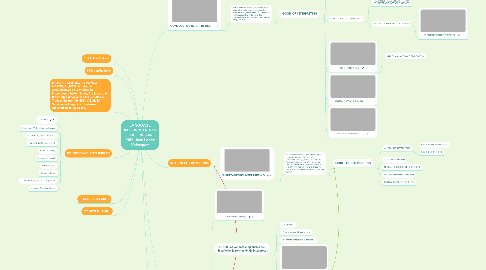
1. CONSECUTIVE INTERPRETING
1.1. As the name indicates, the interpretation follows the statement. The interpreter first listens to the statement or question in one language, then interprets; the interpreter listens to the response and then interprets that
1.1.1. MODES OF INTERPRETING
1.1.1.1. BOOTH INTERPRETING
1.1.1.1.1. SPECIALIZED FIELDS IN SCIENCE, TECHNOLOGY AND MANY MORE TOPICS
1.1.1.2. CONFERENCE INTERPRETING
1.1.1.2.1. SPECIALIZED FIELDS IN SCIENCE & TECHNOLOGY AND MANY MORE TOPICS
1.1.1.3. ONE-ON-ONE (BILATERAL) INTERPRETING
1.1.1.3.1. SPECIALIZED FIELDS IN INTERPRETATION
1.1.1.4. TELEPHONE INTERPRETING
1.1.1.5. MOVIE-SUBTITLING INTERPRETING
1.1.1.5.1. SPECIALIZED FIELDS ON ACTING, AND COMPUTER SCIENCES & TECHNOLOGY
1.1.1.5.2. DIFFERENT TOPIC BASIC TRANSLATING
1.1.1.6. SIGHT TRANSLATION
1.1.1.6.1. BRAILE LANGUAGE SIGHT TRANSLATION
1.1.1.7. SIGN LANGUAGE TRNSLATING
1.1.1.8. ERRORS AT INTERPRETING
2. 11 A Policy Address
3. 9 Diction/Register
4. MAYORAL ASENSIO, R. Y MUÑOZ MARTÍN, R. (1997). Estrategias comunicativas en la traducción intercultural. En Fernández, P. y Bravo, J.M. (Eds.), Aproximaciones a los Estudios de Traducción. (pp. 143-192). Valladolid: Servicio de Apoyo a la Enseñanza, Universidad de Valladolid.
5. INTERPRETATION TECHNIQUES
5.1. 1 Speaking
5.2. 2 Preparation/Anticipating the Speaker
5.3. 3 Complex Syntax/Compression.
5.4. 4 Word Order/Clusters pag. 45
5.5. 6 Untranslatability
5.6. 7 Figures of Speech
5.7. 10 Formal Style.
5.8. 8 Argumentation
5.9. 12 Quotations / Allusions / Transposition
5.10. 5 General Adverbial Clauses
6. INTERPRETATION METHODS
6.1. SIMULTANEOUS INTERPRETING
6.1.1. As the name indicates, the interpretation occurs at the same time as the statement is being spoken. Or almost. In the simultaneous mode, the interpreter .listens and speaks at the same time in a low whispered voice, with or without the use of a voice amplifier or assisted listening device
6.1.1.1. MODES OF INTERPRETING
6.1.1.1.1. WHISPERING INTERPRETING
6.1.1.1.2. COURT INTERPRETING
6.1.1.1.3. MEDICAL PROCEDURES INTERPRETING
6.1.1.1.4. MOVIE-DUBBING INTERPRETING
6.1.1.1.5. SIGN LANGUAGE INTERPRETING
7. UNIVERSITY THEORIES. (
7.1. Spanish Language Origin
7.2. 1 (UNO) Las variantes regionales del Español en la formación de Intérpretes
7.2.1. 1.1 Nivel fónico
7.2.2. 1.2. Variante Diatópica en el texto
7.2.3. 1.3. Variante Diatópica en la percepción
7.2.4. Ejemplo:
7.3. 2 (DOS) Principales Teorías de la Interpretación
7.3.1. 2.1 Teorías Cognitiva de la Interpretación.
7.3.2. 2.2. Teorías Escéptica de la Interpretación
7.3.3. 2.3. Teoría Ecléctica
7.4. 3 (TRES) Tipos de interpretación 1
7.4.1. 3.1. simultánea
7.4.2. 3.2. consecutiva
7.4.3. 3.3. susurrada
7.5. 4 (CUATRO) Tipos de interpretación 2
7.5.1. 4.1 Jurada
7.5.2. 4.2. Enlace
7.5.3. 4.3 Acompañamiento
7.6. BIBLIOGRAPHY
7.6.1. PEÑA, S. y HERNÁNDEZ, M.J. (1994). Traductología. Málaga.
7.6.2. VÁZQUEZ-AYORA, G. (1977). Introducción a la traductología. Curso básico de traducción. Washington, DC: Georgetown University Press.
